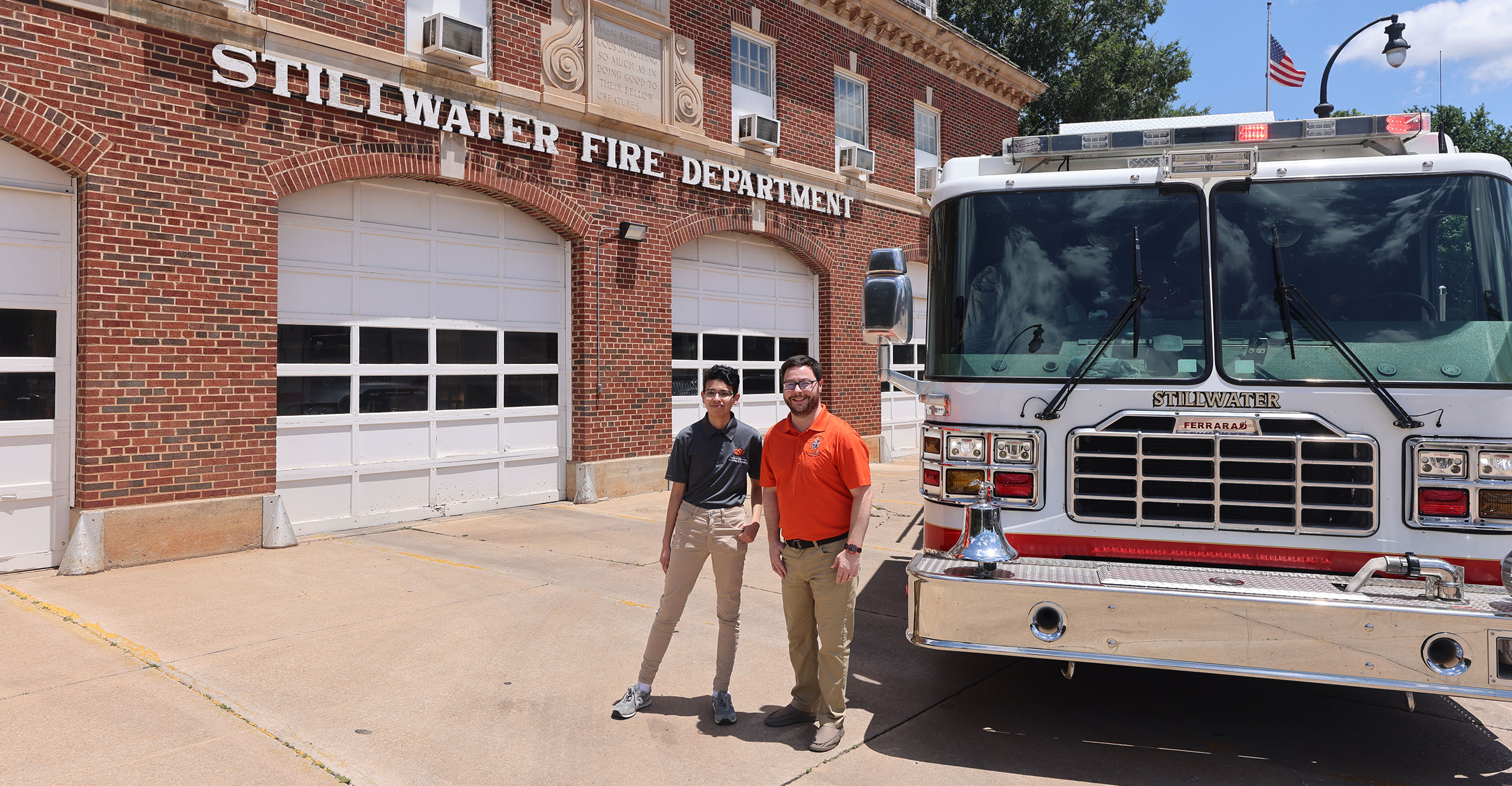
CEAT research uses metaphorical analysis to study disaster response
Wednesday, July 16, 2025
Media Contact: Tanner Holubar | Communications Specialist | 405-744-2065 | tanner.holubar@okstate.edu
Can metaphors be used to explain why and how certain command structures don’t fit all disaster response efforts? That is a question researchers in the College of Engineering, Architecture and Technology are trying to answer.
Dr. Tony McAleavy, an associate professor in the School of Fire, Construction and Emergency Management, and Lisa (Vec) Wier, a fire and emergency management administration Ph.D. student and graduate research assistant on McAleavy’s team, used metaphorical analysis to study disaster response.
The duo published a paper titled, “Icehotel or Wonderland? Reimagining the United States’ National Incident Management System,” earlier this year in the Journal of Business Continuity & Emergency Planning.
The paper examines the National Incident Management System and the Incident Command System by using metaphors to examine the roles these systems play in how first responders react to emergencies, disasters and catastrophes.
NIMS is a standard framework designed for all levels of government, non-governmental organizations and private citizens to work together effectively during an emergency.
ICS is a system designed to form an umbrella structure for all responding agencies and people during an emergency. This includes integrating facilities, equipment, personnel and procedures under one command structure.
These two systems were analyzed using multiple metaphors. The team used Gareth Morgan’s seminal organizational metaphors, Pinto’s “Icehotel” and “McCabe’s Wonderland.”
Morgan’s metaphors examine an organization as eight different entities: a machine, an organism, a brain, a culture, a political system, a psychic prison, an instrument of domination, and as in flux and transformation.
The Icehotel metaphor references a hotel made new each year out of ice. These hotels only exist when certain conditions are met and are then dismantled when the conditions are no longer present.
“It melts every year and every year they rebuild it,” Wier said. “It is both temporary and highly functional. We looked at how the ICS is the same. It is temporary because it only appears during emergencies or disasters. It is a very highly functional organization.”
The Wonderland metaphor, based on “Alice in Wonderland,” focuses on how many functions within an organization can be unpredictable and contradictory while still functional during a chaotic event.
“It can be a chaotic realm, where A plus B equals Z or something like that,” Wier said. “It can be all over the place but still make sense and at the end of the day it is a functioning system in some capacity.”
The paper was an assignment during a 2021 master’s course on incident management. McAleavy asked Wier to join his research team as a graduate research assistant due to her perspective on the research being stronger than other students’ work.
“It’s really the start of our partnership, so to speak,” McAleavy said. “What stood out to me, was Vec’s academic curiosity and strength. When I brought them on as a graduate research assistant, their work was consistently at a level higher than could normally be expected of a master’s (now PhD) student.”
They worked hard for four years to get the article published with multiple levels of revisions and additions. Wier said it was rewarding when it was published in January 2025.
McAleavy and Wier developed theories based on their metaphorical analysis that have been used to make recommendations on training models that are designed to promote urgency and criticality.
“Metaphors carry great weight and communicative power, which is why we use them,” McAleavy said. “It opens new ways of thinking about things and organizations.”
This study followed previous research into how the systems are understood/misunderstood. One of the greatest challenges is that practitioners criticize literature for lacking any grounding in practice, and academics criticize anecdotal responses for not being academically based.
“One of the challenges we face in the command system literature is that the system itself is ground level,” McAleavy said. “Originally, for fire service, it was mandated across all government agencies. Fire service has a culture that’s ingrained; it’s the way they breathe and the way they think. It’s a shared mental model. Other agencies can see things differently, which causes interoperability problems.”
Their research is the bridge between academia and practice. With first responders approaching emergencies, disasters and catastrophes with the same systems, it is a certainty that at some point part of a system will fail.
“What we know with 60-70 years of disaster social science is that the system fails somewhere,” McAleavy said. “So, the idea of using metaphors is helping understand the complexity and the differences in the system. The metaphors aren’t literal, but they’re there to promote critical thinking and reflection.”
Based on their conclusions, certain systems work well for smaller incidents but struggle with larger, more complex disasters. Some of the systems are too rigid and struggle to adapt to changes while some are too complex or hard to understand.
Through the lens of analyzing these organizations through metaphors, it is creating new dialogue among first responders and making disaster response more efficient by saving more lives.
